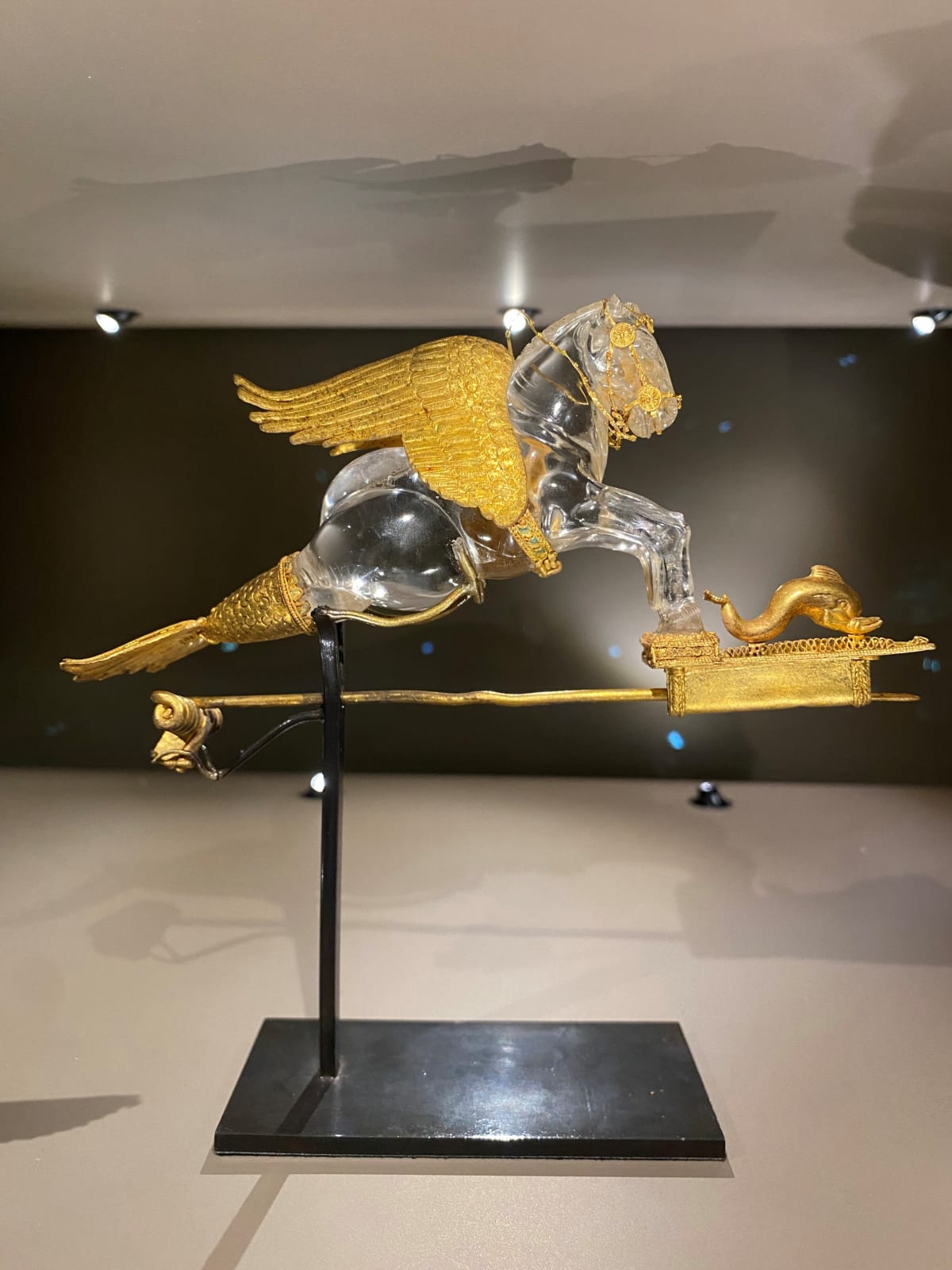Inv. no. 2846
This fibula, an exceptional example of ancient craftsmanship, most likely originated in the Hellenistic world around the Black Sea. However, a Central Asian origin might also be possible, as suggested by the presence of a maker’s monogram beneath one of the front hooves - a feature characteristic of Bactrian lapidary work. Given its considerable weight, the fibula was presumably created as a funerary object rather than a practical brooch for daily wear.
In Greek mythology, the hippocamp was a mythical creature combining the upper body of a horse with the lower body of a fish. In this piece, the horse’s form is carved from nearly flawless rock crystal, while the wings, fishtail locking mechanism, and reins are fashioned from gold sheet adorned with twisted and beaded wire. Unusually, the front section of the locking mechanism is surmounted by a dolphin. Traces of enamel remain on the exquisitely delicate reins and on the intricate gold filigree.
The pairing of a hippocamp and dolphin is unique among surviving fibulae from the Greek and Roman periods, though similar imagery appears on certain southern Italian coins of the 5th century BC. Supporting the possibility of a Central Asian provenance are numerous examples from the region’s ancient art that incorporate dolphin motifs in jewellery, textile appliqués, and architectural decoration—testament to the widespread diffusion of Greek artistic influence across Central Asia from the 3rd century BC onward.
(Text abbreviated from research provided by Osmund Bopearachchi)






